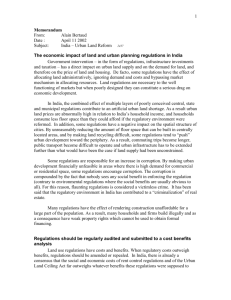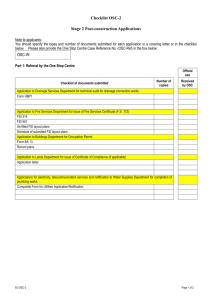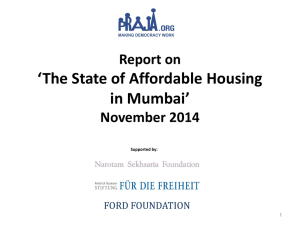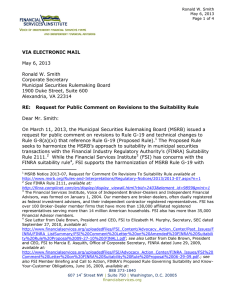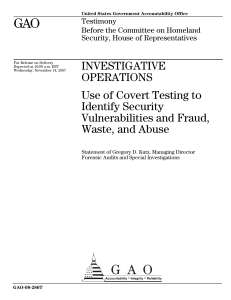B->phi phi
advertisement
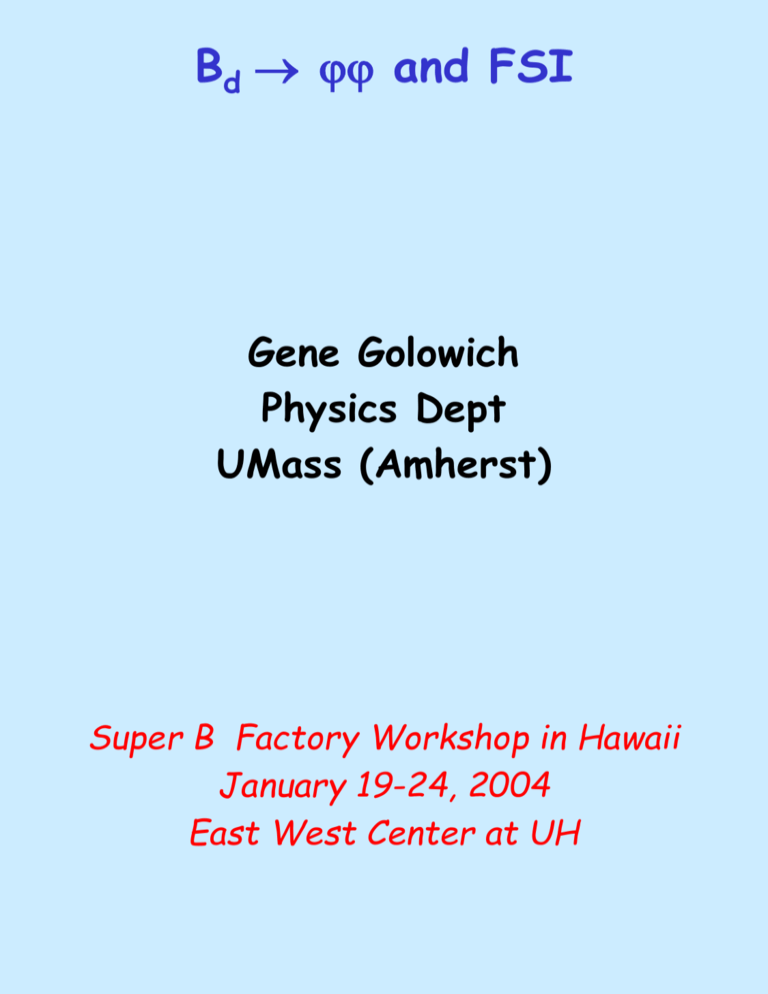
Bd and FSI Gene Golowich Physics Dept UMass (Amherst) Super B Factory Workshop in Hawaii January 19-24, 2004 East West Center at UH From Out of the Past Adventurers Again Adventurers Again Adventurers Again Usual Suspect 1: External Tree Usual Suspect 2: Internal Tree Usual Suspect 3: Penguin Usual Suspect 4: Exchange On Detecting the Bd Mode Good for Vertex ID Charged particles only (each K+K-) -peak is narrow -peak is near threshold in M2[K+K-] Comb. Bckgd limited near M2[K+K-] thrhld 2-body decay (momentum of is fixed) Four kaons good for particle ID (discriminate against comb. bckgds) Angular distribution for 0- 1-1- decay. However Bd is very rare Essential to understand backgrounds Beware: Can get ’s from Ds’s, etc Bd Strategy Experimental Keep lowering bound on branching ratio (Current PDG bound is <1.2 10-5) Eternal hope: Rare mode New Physics Theoretical Which SM amplitudes contribute? (Donoghue, Golowich, Petrov, Soares) Help clarify interpretation of signal. A Menu of Mechanisms _ 1. = - | s s > Is Not Exact A] Non-magic mixing B] Isospin violations _ 2. Assume That = - | s s > C] OZI-forbidden process D] Unitarity and Final State Ints (FSI) Intriguing possibility that Bd is a ‘unique’ probe of FSI in B decays - ‘Non-magic’ Mixing 1.Magic - Mixing (0) 0 = tan-1 1/ 2 _ and |> = - | s s > 2. Physical Mixing (=0+) _ _ _ |> = - |s s > - | u u d d / 2 3. Amplitude, Branching Ratio MB [non-magic] = MB BrB [non-magic] = 2(deg) 10-3 BrB 0-0 Isospin-violating Mixing 1. Mixing Parameter xmix: xmix = φ Hmix | ρ mφ2 mρ2 = 6.4 10-4 2. Amplitude Relation: MB[iso-viol] = xmix MB 3. Branching Ratio Relation: BrB[iso-viol] = 4 10-7 p (φ ) p( ρ ) BrB Another Source: OZI-forbidden The Unitarity Mechanism and ’ [LIPKIN NP B291 (1987) 720] Unitarity Estimate 1. Disclaimer: Many intermediate states at E = mB. Cancellations make it more uncertain! Br’s unknown for Bd 2,2’,’. 2. Numerics: Consider two cases: a] Intermediate State Only b] All 2-body ,’ Int. States Find that 10 2 ( only 2η ) Br[φφ ] 3 Br[ηη ] 10 ( all η η' ) Bd Summary Flavor Disadvantaged (`FD’) Decay Hadron final state, yet highly suppressed Challenge to SuperB to detect FD decays Bd IS There! Variety of secondary SM mechanisms. Potential for `unique’ test of FSI. But cancellations reduce unitarity signal. Testing New Physics (N.P.)? BR Detection at O(10-7) N.P. (?) FSI in B Decays `Hard’ Physics (pQCD): HQET: Beneke, Buchalla, Neubert, Sachrajda [PRL 83 (1999)], Keum,Li,Sanda [PRD 63 (2001)] Etc SCET: Bauer, Fleming, Luke [PRD 63 (2001)], Bauer, Fleming, Pirjol, Stewart [ “ ], Etc `Soft’ Physics (non-pQCD): Unitarity: JD, EG, AP, JS [PRL 77 (1996)]. QCD: Donoghue, Golowich, Mojzis (recent) Etc Cross Sections at High Energy DGPS Analysis [PRL 77 (1996)] Basic Premises Hadronic degrees of freedom, Unitarity, mB limit. Insights: Soft Rescattering (S-R) S-R suffers mB-2 suppress. in phase spce But Optical Theorem: Msoft s1.08 (!) Conclusion Can soft physics upset power counting? Recent Efforts [JD,EG,MM] Modified Premises Still `FSI & soft physics’ issue, Still mB limit, . . but . . Now work directly with QCD. Aim of Study Can power counting be upset? Seek dynamical insights . . . Apparent Dynamics of FSI QCD Dynamics of FSI `Semi-Soft QCD’ & Power Counting Perturbative Propagator D(t) 1 t Effect of Soft Perturbative QCD D(t,s) 1 [1 + ln s/t t + ( ln s/t)2/2 + . . . ] Summing the Logs ε s D(t,s) 1 t t Final Thoughts on Soft FSI The Unlikely To get a quantitatively accurate measure of `soft’ FSI in B decay which is a rigorous consequence of QCD. The Possible To obtain, as a matter of principle in quantum field theory, a meaningful insight of whether (and how) soft physics affects power counting.
